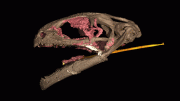
Researchers developed a promising vaccination model against herpes simplex virus and other STIs, including HIV-1.
Working with mice, a team of scientists at Yale University developed a new vaccination model that offers a promising vaccination strategy against the herpes simplex virus and other STIs such as HIV-1.
Yale researchers have developed a new model for vaccination against genital herpes, a disease for which there has been no cure and no effective immunization. Their study appears in the Advance Online Publication of the journal Nature.
Genital herpes, known formally as herpes simplex virus (HSV), is a mostly sexually transmitted infection (STI) that accounts for significant disease and morbidity.
Until now, most efforts to develop a vaccine have focused on the immune system’s antibodies, or T cells, circulating through the body. When T cells encounter foreign invaders such as bacteria or viruses, they learn to recognize them and mount ever-stronger immune responses to fight them. But efforts to harness these circulating T cells have not been effective in organs such as the vagina, intestines, lung airways, and central nervous system, which restrict the entry of these “memory” T cells.
To investigate an alternative approach, the Yale team focused instead on peripheral tissue in the female genital tract, where viral exposure occurs. The challenge was to recruit virus-specific T cells into the vaginal mucosa without triggering a potentially harmful inflammatory response of the immune system.
Working with mice, they explored a two-part vaccine strategy they call “prime and pull.” The “priming” involved conventional vaccination to elicit a system-wide T-cell response. The “pulling” involved the recruitment of activated T cells directly into the vaginal tissue, via the topical application, of chemokines — substances that help mobilize the immune cells.
They found that the recruited T cells were able to establish a long-term niche and offer protective immunity against genital herpes by reducing the spread of HSV into the sensory neurons.
The Yale team’s new vaccination model may offer a promising vaccination strategy against not just HSV, but potentially other STIs such as HIV-1. “This new vaccine approach can work with any vaccines that elicit strong T-cell immunity, and will set the stage for protection against infectious diseases by setting up memory T-cells at the site of exposure,” said lead author Akiko Iwasaki, professor of immunobiology at Yale School of Medicine and a member of Yale Cancer Center’s molecular virology program.
“This technology can be potentially applied to other infectious agents that enter through a given portal, such as the genital tract, respiratory tract, the skin, or gut,” she added.
Reference: “A vaccine strategy that protects against genital herpes by establishing local memory T cells” by Haina Shin and Akiko Iwasaki, 17 October 2012, Nature.
DOI: 10.1038/nature11522
Co-author is Haina Shin of Yale School of Medicine. The study was supported by grants from the National Institutes of Health.









But what about my cold sores?!
“Promising vaccination strategy” aka “this probably won’t even make it past the first phase of clinical trials.”
I agree with brad, what about my cold sores?
@Jesus
If it was an easy problem it would have been solved by now
Overly negative comments like yours bring no progress
Its been great for me to read this amazing post, i really appreciate your efforts for this helpful post. I was searching about this topic for a while please keep sharing in future also.